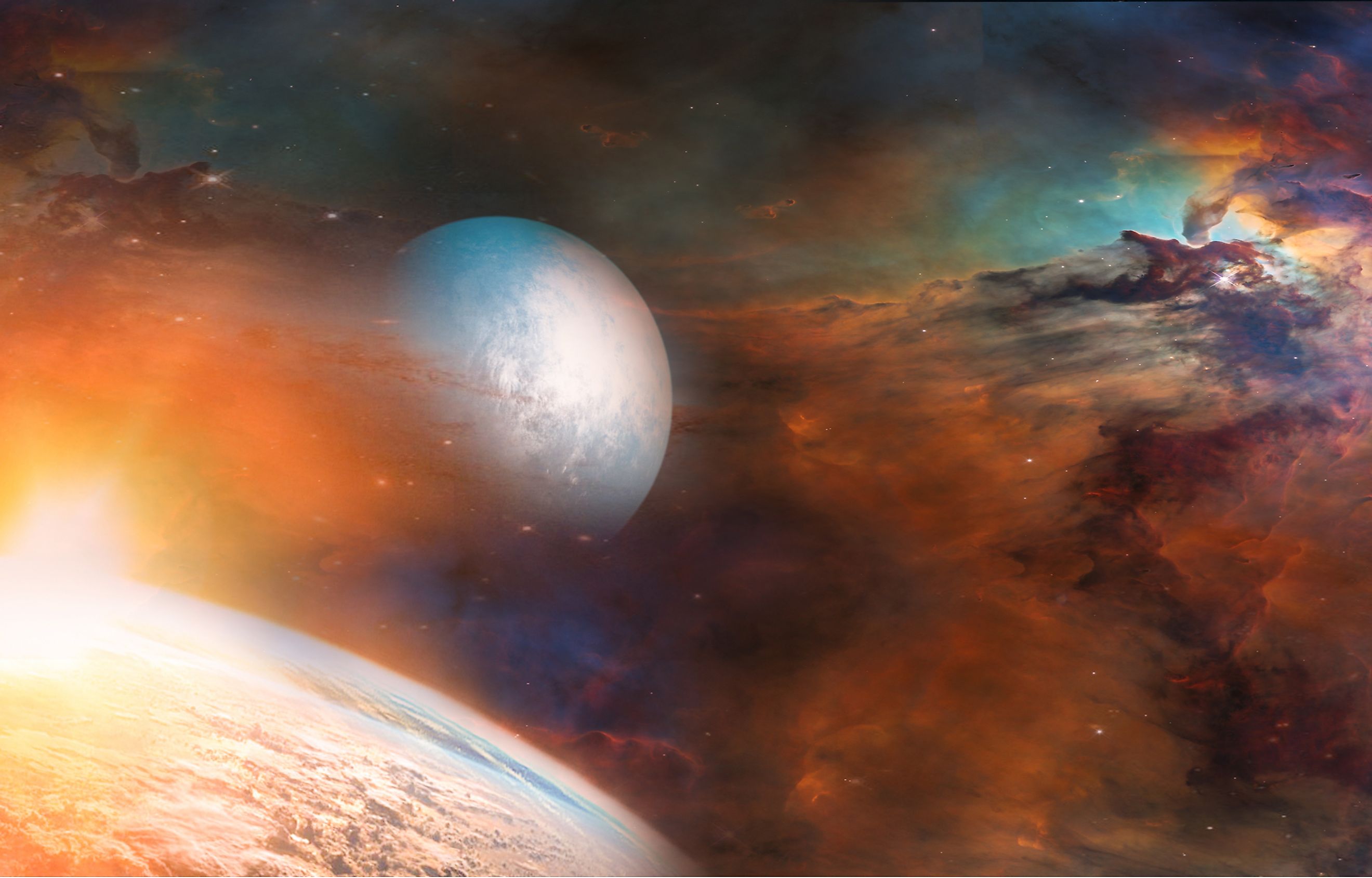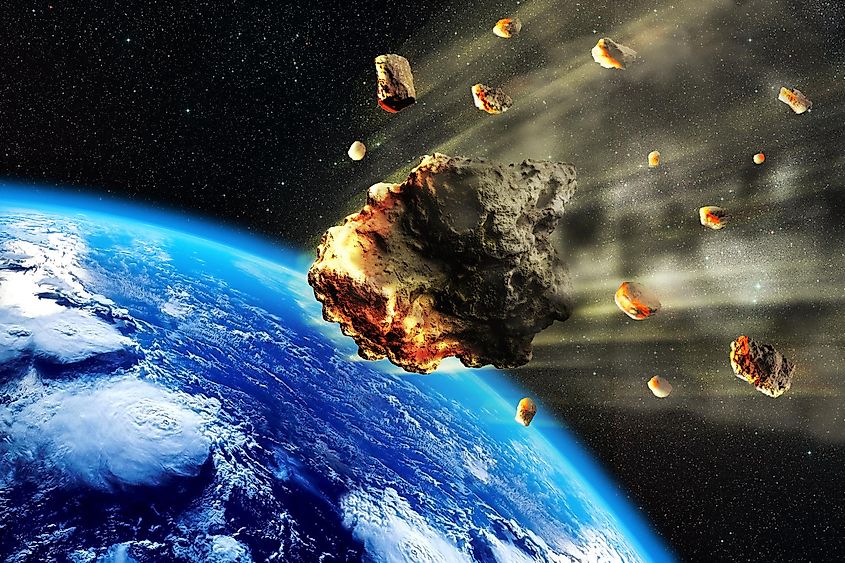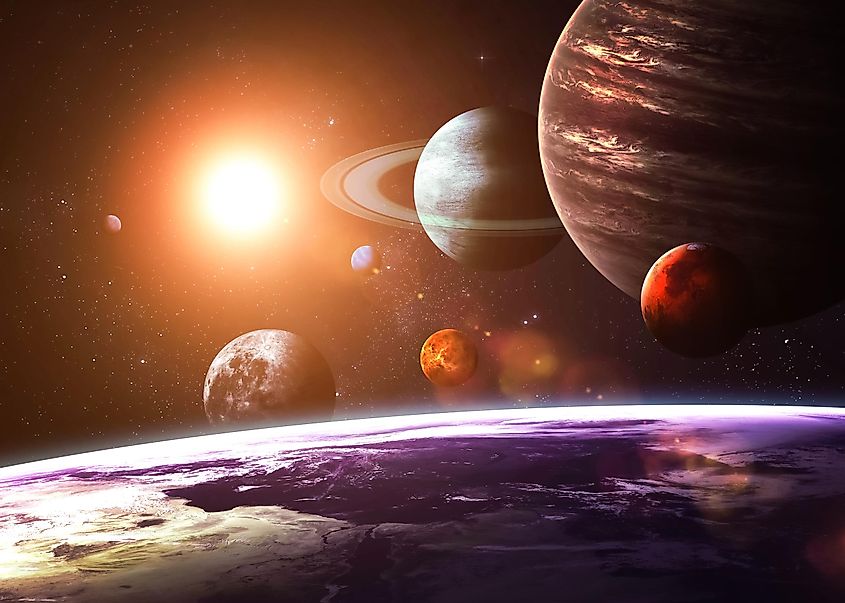
How Old Is The Solar System?
A hundred years to a human seems like a long time. Knowledge and technology advance at such a fast rate that even a few decades seem like forever. If you were asked to imagine the passage of a million years, your brain would likely have a difficult time, which is true for every human on Earth. That is because the human brain cannot imagine such a significant passage of time as it is something we can never experience. The science of astronomy generally deals with vast timescales, some so vast that the human brain has no hope of physically comprehending it. This is definitely the case with the age of the solar system. Interestingly, the age of the solar system is a relatively recent discovery. For most of human history, there have been varying assumptions about the age of the Earth and the rest of the planets. How old is the solar system, and how was it determined?
History Of The Solar System’s Age
Humans have tried to determine the age of the Earth for as long as we have been human. Cultures generally believed that the Earth was thousands of years old for most of human history. It wasn’t until the 1800s that scientists finally began to see just how old Earth really was. In 1862, the physicist William Thomas became one of the first scientists to calculate a fixed age for the Earth. To do so, he assumed the Earth began as a sizeable molten rock and calculated how long it would take for temperatures to reach their current state. He calculated that the Earth was between 20-million and 400-million years old. However, geologists and biologists at the time were skeptical of these numbers.
A few years before William Thomas’ calculation, Charles Darwin had published his theory of natural selection. Although natural selection and evolution were controversial to the general public, Darwin’s theory was quickly accepted by the scientific community. Darwin believed that for life to evolve to become as many species as today, the Earth must be extremely old, far older than what William Thomas had calculated. However, the numbers proposed by Thomas Williams were largely accepted by astronomers and physicists. John Perry was the first scientist to predict that the Earth was billions of years old correctly. In 1895, Perry developed a more sophisticated version of William Thomas's model and predicted that the Earth was two to three billion years old. Unfortunately, Perry’s ideas were ignored, and the idea that the Earth was roughly 20-million years old stuck.
The Discovery Of Radioactive Decay

In 1896, physicist and chemist Marie Curie made the most important discovery in determining the age of the Earth. Curie discovered the existence of radioactive material and determined that the process of radioactive decay released heat energy. This meant that models used to predict the Earth’s age based on the amount of heat it possesses were deeply flawed. Radioactive decay within the Earth meant that heat could be replenished, so any previous calculations of the Earth’s age were wrong. Interestingly, the discovery of radioactive decay also yielded the discovery of radiometric dating. The two scientists to discover radiometric datings were Ernest Rutherford and Frederick Soddy. Rutherford and Soddy found that radioactive decay resulted from some atoms being broken down into lighter particles. Furthermore, they determined that this process occurred at a consistent rate, and every radioactive element had its unique decay rate. The rate of decay was called the half-life, meaning that over a period of time, half of the atoms of radioactive material will decay into lighter atoms. For the first time in history, scientists had the necessary knowledge and technology to determine the age of Earth’s rocks.
Meteorites And The Age Of The Earth

Despite radioactivity decay and radiometric dating being discovered in the early 20th century, it was not until the 1950s that these methods became advanced enough to determine an accurate estimate of the age of the Earth. Because the Earth is geologically active and the surface is constantly changing and recycling rock, it isn't easy to find any rocks on Earth that are old enough to determine the age of the Earth itself. Thus, in the 1950s, geologist Clair Cameron Patterson used meteorites to estimate the age of the Earth. Meteorites are leftover debris from the formation of the solar system, and so the period of their radioactive material would give scientists a more accurate number for Earth’s actual age. Using radiometric dating, Patterson determined that the Earth was approximately 4.5-billion years old. For the first time in history, humanity finally knew the age of the Earth.
The Age Of The Solar System

What does the age of Earth have to do with the age of the solar system? As it turns out, when you discover the age of one planet using meteorites, you have determined the age of them all. Meteorites are the oldest objects in the solar system, having formed shortly after the Sun and during the earliest stages of planet formation. By determining the age of multiple meteorites, scientists can estimate the age of not just the Earth but also the entire solar system. The Sun formed 4.5-billion years ago, and planet formation began immediately. Eight planets coalesced out of the gas and dust in orbit around the Sun. For the last 4.5-billion years, each of these planets has remained in orbit around the Sun. On one of them, life eventually arose and evolved to a point where it could look at the heavens above and determine the age of the worlds around it.











